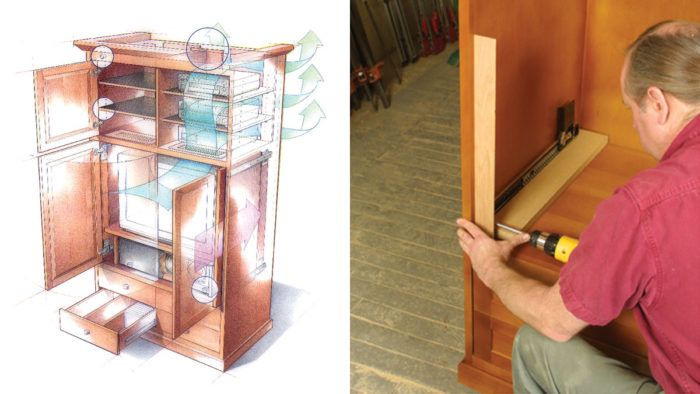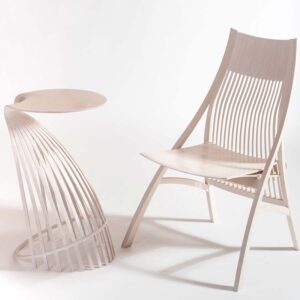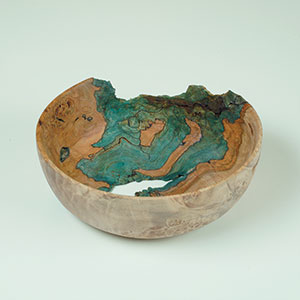Engineering an Entertainment Center
There's more to it than putting a television in a box
Synopsis: A good design for an entertainment center involves a lot of planning, examining the requirements of each component, and then integrating everything seamlessly. Brooks Tanner, a custom entertainment center builder, walks readers through the design process. He shares solutions to a number of real-world scenarios, such as how to accommodate for various components, how to manage wires and ventilation, the importance of planning for upgrades in technology (such as accommodating for a wide-screen HDTV set), and how to determine the proper overall dimensions. Other techniques detailed in this article include installing pocket doors and building rattle-free panels.
Entertainment centers have been around since the days of the Victrola, but with the advent of enormous televisions and sound systems that would astonish Thomas Edison, entertainment centers too need to evolve. A modern cabinet not only needs to house the television but also sound and video media, satellite receivers, DVD players, CD players, audio amplifiers and the center-channel speaker.
Most designs today are large boxes that differ little from bookshelves or display cabinets, their only concession to electronics being that they have holes for wires. But a good design for an entertainment center takes a little more planning. It starts by examining the requirements of each component and then integrating everything seamlessly.
Television is the focal point of the cabinet
Television placement is of primary importance. The center of the screen should be at eye level—approximately 43 in. from the floor, assuming an 18-in.-high seat and 25 in. to eye level from the seat.
Any cabinet built today should be made to house a high-definition television (HDTV), whose wide-screen format will be the only one sold by the year 2006. A screen that is now 24 in. high has a width of 32 in. Under the new format, that same 24-in.-high screen will be approximately 43 in. wide. A cabinet that is made for a present television without extra room on the sides will only fit a future television of shorter height.
The new HDTVs allow for six audio channels, so the entertainment center requires a place for center-channel audio. Because this is where most of the dialog comes out, it is important that the sound seem to emanate from the screen, requiring the speaker to be in the middle of the cabinet, directly above or below the television. If it must be placed away from the television, the speaker should be angled toward the listener; otherwise, information from that speaker will sound as if it’s above the listener’s head or coming from the floor, depending on the height of the speaker.
Drawers for media storage are almost always located in the bottom of the cabinet, convenient for both children and adults.
From Fine Woodworking #159
For the full article, download the PDF below:
Fine Woodworking Recommended Products

Drafting Tools

Stanley Powerlock 16-ft. tape measure

Blackwing Pencils






















Log in or create an account to post a comment.
Sign up Log in